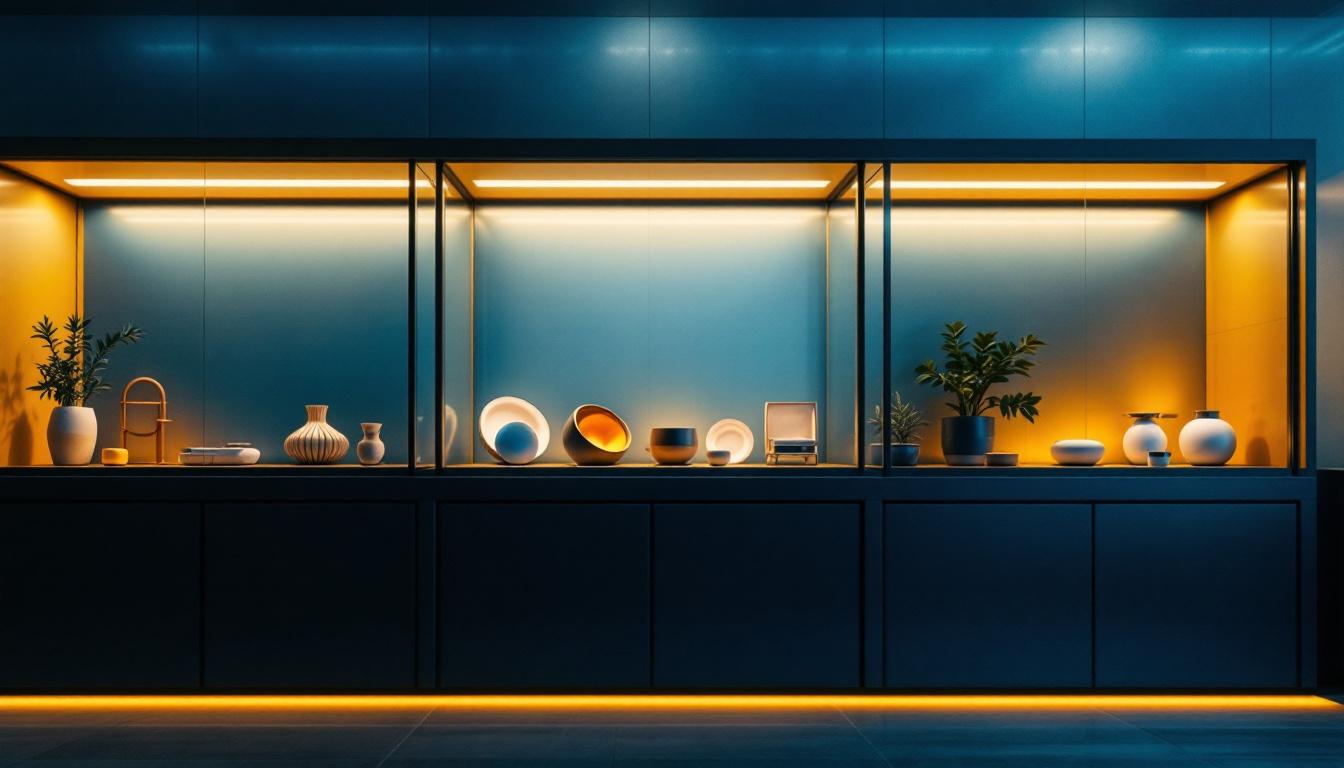
In the realm of lighting design, the integration of computer technology has revolutionized the way professionals approach their projects. From architectural lighting to stage design, understanding the nuances of computer lighting is crucial for lighting contractors. This article provides an essential checklist that will help lighting professionals navigate the complexities of computer lighting systems, ensuring optimal performance and aesthetic appeal.
Before diving into the checklist, it is vital to grasp the fundamentals of computer lighting systems. These systems typically consist of various components, including software, controllers, and fixtures, all of which work in harmony to create dynamic lighting effects. The integration of these elements allows for a level of creativity and precision that can transform any space, whether it be for theatrical productions, concerts, or architectural installations.
lighting design software serves as the backbone of any computer lighting system. It allows professionals to visualize their designs, simulate lighting effects, and program intricate lighting sequences. Familiarity with industry-standard software is essential for any lighting contractor, as it can significantly enhance creativity and efficiency. Many of these programs also offer advanced features such as real-time rendering and 3D visualization, enabling designers to experiment with various lighting angles, colors, and intensities before implementation. This not only saves time but also helps in communicating ideas more effectively to clients and collaborators.
Controllers are the hardware that communicates between the software and the lighting fixtures. Understanding the various protocols, such as DMX512 and Art-Net, is crucial for ensuring compatibility and seamless operation. A solid grasp of these protocols enables lighting professionals to troubleshoot issues and optimize performance. Additionally, modern controllers often come equipped with user-friendly interfaces and mobile app connectivity, allowing for remote operation and real-time adjustments during live events. This flexibility can be a game changer, especially in fast-paced environments where quick adaptations are necessary to achieve the desired visual impact.
The lighting fixtures themselves are the final piece of the puzzle, and they come in a variety of types, including LED, incandescent, and moving head lights. Each type has its own unique characteristics and applications; for instance, LED fixtures are known for their energy efficiency and long lifespan, making them a popular choice for both permanent installations and touring productions. On the other hand, moving head lights offer versatility and dynamic movement, allowing for sweeping effects and intricate patterns that can elevate any performance. Understanding the strengths and limitations of each fixture type is essential for creating a cohesive lighting design that meets both aesthetic and functional requirements.
Another critical aspect of computer lighting systems is color theory, which plays a significant role in setting the mood and atmosphere of a space. Different colors can evoke various emotions and reactions from an audience, making it essential for lighting designers to have a solid understanding of how colors interact with one another. For example, warm colors like reds and oranges can create a sense of intimacy and warmth, while cooler colors like blues and greens can evoke calmness or even sadness. By mastering color mixing and the psychological effects of different hues, lighting professionals can craft experiences that resonate deeply with viewers, enhancing the overall impact of their designs.
Every lighting project requires specific components to function effectively. The following checklist outlines the essential elements that should be considered when setting up a computer lighting system.
The choice of lighting fixtures is paramount. Whether utilizing LED, incandescent, or halogen lights, each type offers distinct advantages. LED fixtures, for instance, are energy-efficient and have a longer lifespan, making them a popular choice among professionals. It is essential to assess the project requirements and select fixtures that align with the desired lighting effects. Additionally, consider the color temperature of the fixtures; warmer tones can create a cozy atmosphere, while cooler tones are often used for more vibrant and energetic settings. The ability to dim or change colors with smart lighting options can also enhance the versatility of your setup, allowing for dynamic changes that can match the mood or theme of an event.
A reliable power supply is crucial for any lighting setup. Ensure that the power distribution system is capable of handling the total wattage of all fixtures. Additionally, consider using power conditioners to protect against voltage spikes and fluctuations, which can adversely affect performance and longevity. It’s also wise to implement a circuit breaker system to prevent overloads, which can lead to outages or even damage to your equipment. Furthermore, incorporating backup power solutions, such as uninterruptible power supplies (UPS), can safeguard your lighting system during unexpected power failures, ensuring that your setup remains operational even in challenging conditions.
In a computer lighting system, networking equipment facilitates communication between devices. Switches, routers, and wireless access points are vital for ensuring that all components can communicate effectively. Proper configuration of the network is essential to prevent latency and ensure real-time control of lighting effects. Additionally, consider the use of network protocols such as DMX or Art-Net, which are specifically designed for lighting control and can significantly enhance the responsiveness and flexibility of your setup. Investing in quality cabling and connectors can also improve signal integrity and reduce the risk of interference, ensuring that your lighting system operates smoothly and reliably throughout its use.
Once the hardware is in place, the next step involves programming the lighting system. This stage allows lighting professionals to bring their creative visions to life through various control techniques.
Lighting scenes are pre-programmed settings that define how fixtures behave under specific circumstances. By creating multiple scenes, lighting professionals can easily switch between different moods and atmospheres, enhancing the overall experience for the audience. It is important to consider the flow of the event or performance when designing these scenes.
Dynamic effects, such as fades, chases, and strobe effects, can add excitement to a lighting design. Automation tools within lighting software allow for the synchronization of lighting changes with music or other performance elements. This level of integration can elevate the audience’s experience, making the lighting an integral part of the overall production.
Testing and troubleshooting are critical steps in the lighting setup process. Ensuring that everything functions as intended before the final performance is essential to avoid any unexpected issues.
Prior to the event, conduct thorough testing of all components. This includes checking the functionality of each fixture, verifying network connections, and ensuring that the software is correctly configured. A comprehensive pre-event checklist can help identify potential problems early, allowing for timely resolutions.
Even with thorough preparation, issues may arise during an event. Familiarity with common troubleshooting techniques can save valuable time. For instance, if a fixture is not responding, checking the power supply and network connections should be the first step. Additionally, understanding how to reset fixtures and controllers can quickly resolve many issues.
Safety should always be a priority in any lighting setup. Proper precautions can prevent accidents and ensure a smooth operation during events.
When working with electrical equipment, adhering to safety standards is paramount. Ensure that all wiring is properly insulated and that circuits are not overloaded. Regularly inspect equipment for wear and tear, and replace any damaged components immediately to prevent hazards.
For installations that involve hanging fixtures, proper rigging techniques must be employed. Utilize certified hardware and follow manufacturer guidelines to ensure that all fixtures are securely mounted. Conduct regular inspections of rigging setups to ensure ongoing safety throughout the event.
After an event concludes, it is beneficial to conduct a post-event evaluation. This process allows lighting professionals to assess the effectiveness of their setup and identify areas for improvement.
Soliciting feedback from clients and team members can provide valuable insights into the success of the lighting design. Understanding what worked well and what could be improved will help refine future projects and enhance overall performance.
Keeping a record of lessons learned from each project can serve as a valuable resource for future endeavors. Documenting challenges faced, solutions implemented, and client feedback creates a comprehensive reference that can improve efficiency and effectiveness in subsequent projects.
The lighting industry is constantly evolving, with new technologies and trends emerging regularly. Staying informed is essential for lighting professionals who wish to remain competitive and innovative.
Participating in workshops, webinars, and industry conferences can provide lighting contractors with the latest knowledge and skills. Many organizations offer certification programs that can enhance credibility and expertise in specific areas of lighting design.
Building relationships with other lighting professionals can foster collaboration and knowledge sharing. Engaging in professional networks and communities can lead to new opportunities and insights that can benefit one’s practice.
Incorporating computer lighting into projects requires a comprehensive understanding of technology, design principles, and safety protocols. By following this essential checklist, lighting professionals can enhance their skills, streamline their processes, and deliver exceptional results. As the industry continues to evolve, embracing new tools and techniques will ensure that lighting contractors remain at the forefront of innovation, creating stunning visual experiences that captivate audiences.
Ready to take your lighting projects to the next level? At LumenWholesale, we provide lighting professionals like you with the highest quality, spec-grade lighting products at prices that can’t be beaten. Say goodbye to local distributor markups and hello to a vast selection of reliable lighting solutions that meet the most rigorous industry standards. With free shipping on bulk orders, you can stock up on premium lighting without worrying about hidden fees. Elevate your lighting designs with the unbeatable value and convenience of Wholesale Lighting at the Best Value from LumenWholesale.

Discover effective strategies to educate your team on pendant light fixture parts, enhancing their expertise in lighting solutions.

Discover the frequent pitfalls lighting contractors face with standard bulbs and learn how to avoid them.

Explore the top challenges lighting contractors face when illuminating display cabinets, from selecting the right fixtures to overcoming spatial constraints.

Discover how lighting contractors can enhance their projects with outdoor ceiling fans featuring integrated lighting.